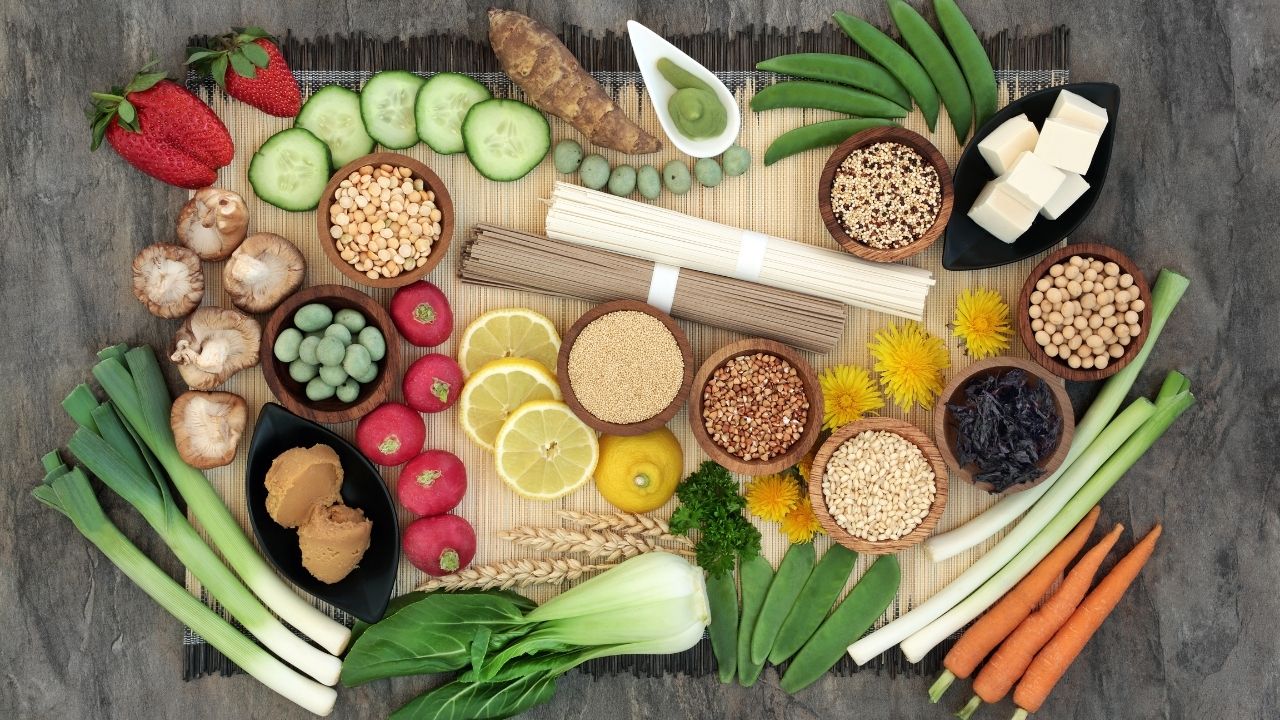
While the majority of diabetics should consume lots of meat, poultry, seafood, and eggs, they should also avoid sugar and fat. People who are concerned about the health effects of their diet should eat a diet rich in fruits, vegetables, whole grains, and legumes. However, diabetics should still occasionally indulge in non-vegetarian foods and drinks. These suggestions can help them make a healthy and balanced diet that suits their lifestyle.
Both salt and flour are common foods that can lead to complications in diabetics. These ingredients can raise blood pressure and add unnecessary calories to your diet. While you should avoid foods high in sodium, there are still options to incorporate them into your meal plans without having to compromise your diet. A diabetic diet menu should contain a majority of whole foods. Whole foods have lower sodium and fats than those that are high in refined sugar. It is important to avoid processed foods, as well as flash frozen foods.

The ideal diabetic diet menu should have a balanced mixture of carbohydrates, proteins, fat, and fiber. Although you don't want too many carbohydrates, it is important to have healthy fats and a variety of them. A diabetes-friendly diet menu should have a balance of all three types. Fiber and protein can slow down your digestion of carbohydrates. Protein will give you additional nutrition and help to raise your blood sugar levels. Diabetes is a condition that requires you to be vigilant about your food intake and maintain a steady blood glucose level.
Your child's regular diet should dictate the diet of a diabetic. This diet will focus on carbohydrates as they can spike your blood sugar. Diabetic diets should avoid breads, pasta, and instead focus on fruits and vegetables. Both fruits, as well vegetables, are rich source of fiber and antioxidants. Instead of eating fruit juices, choose whole fruits. It is important to avoid eating fruit after meals because they can spike blood sugar levels.
The soluble fiber found in cooked oatmeal can help regulate blood sugar and promote heart health. Oatmeal is rich in fiber which can help lower insulin levels. Oatmeal is low-calorie and high in fiber, making it an excellent choice for diabetic diets. A diabetic diet menu should contain some fruits, vegetables and nuts to lower the chance of developing type 2.

Glycemic index is a key factor in diabetic diet plans. This index ranks carbohydrate-containing foods by their effect on blood sugar. A dietitian can help you choose foods that will benefit your condition. In addition, a diabetes diet menu can be tailored to your specific goals and lifestyle. A healthy diet and the right nutrition will help you achieve a diabetes-friendly lifestyle. It is important not to eat excessive amounts of any food.
FAQ
What are 10 healthy habits?
-
Get breakfast every morning.
-
Don't skip meals.
-
Eat a balanced, healthy diet.
-
Get plenty of water.
-
Take care of yourself.
-
Get enough sleep.
-
Stay away from junk foods.
-
Do some form of exercise daily.
-
Have fun!
-
Make new friends.
How to measure body weight?
A Body Fat Analyzer (BFA) is the best method to measure bodyfat. These devices can be used to measure body fat percentages in people who are trying to lose weight.
Here are five ways to lead a healthy lifestyle.
Healthy lifestyles include eating right, exercise regularly, getting enough rest, managing stress, having fun, and eating healthy. Good eating habits include avoiding processed foods, sugar, unhealthy fats, and avoiding junk food. Exercise burns calories and strengthens the muscles. Sleeping enough can improve memory and concentration. Stress management reduces anxiety, depression and other symptoms. And finally, having fun keeps us young and vibrant.
What should I eat?
You should eat lots of vegetables and fruits. They provide vitamins and minerals to keep your immune system strong. They are also rich in fiber, which is good for digestion and makes fruits and vegetables filling. Include at least five portions of fruit and vegetables per day.
Water is essential for your body. Water flushes toxins from your body and helps you feel full between meals. Drink about eight glasses each day.
Refined grains should be replaced with whole grains. Whole grains have all their nutrients intact, including B vitamins, iron, zinc, magnesium, calcium, and protein. Refined grains have been stripped of some of their nutrition.
Avoid sugary drinks. Sugary drinks are full of empty calories and lead to obesity. Instead, you can opt for water or milk, as well as unsweetened herbal teas.
Avoid fast food. Fast food lacks nutritional value. Although it may taste delicious, fast food won't provide you with the energy you need for your daily activities. Instead, stick to healthier options such salads and soups as well sandwiches and pasta.
Reduce your alcohol intake. Avoid alcohol as it can cause empty calories and poor nutrition. Limit your intake to two alcoholic drinks per week.
Red meat should be cut down. Red meats have high levels of cholesterol and saturated fat. Instead, choose lean cuts of beef and pork, lamb, chicken or fish.
How do you get enough vitamins?
Your diet can provide most of your daily requirements. Supplements may be necessary if you are not getting enough of a particular vitamin. You can purchase a multivitamin that includes all of the vitamins you need. You can also get individual vitamins from your local pharmacy.
Talk to your doctor to find out which foods are rich in vitamins. Some examples of rich sources of vitamins E and K include dark green leafy vegetables, such as spinach.
If you are not sure how much vitamin you should be consuming, ask your doctor. Based on your medical history and your current health, your doctor can recommend the correct dosage.
What is the difference between a virus and a bacterium?
A virus is a microscopic organism that cannot reproduce outside its host cell. A bacterium is an organism that splits itself in two. Viruses are very small (about 20 nanometers) while bacteria are larger (up to 1 micron).
Viruses are spread via contact with infected bodily liquids such as urine, saliva, semen and vaginal secretions. Bacteria are usually spread through direct contact with contaminated objects or surfaces.
Viral infections can also be introduced to our bodies by a variety of cuts, scrapes or bites. They may also get into the body through the nose and mouth, eyes, ears or rectum.
Bacteria may enter our bodies through cuts and scrapes on our skin, burns, insect bites, and other wounds. They can also be introduced to our bodies by food, water and soil.
Viruses and bacteria both cause illness. But viruses do not have the ability to multiply within their hosts. They only cause disease when they infect living tissue.
Bacteria can grow in their hosts and cause disease. They can spread to other parts of our bodies. That's why we need antibiotics to kill them.
Statistics
- nutrients.[17]X Research sourceWhole grains to try include: 100% whole wheat pasta and bread, brown rice, whole grain oats, farro, millet, quinoa, and barley. (wikihow.com)
- The Dietary Guidelines for Americans recommend keeping added sugar intake below 10% of your daily calorie intake, while the World Health Organization recommends slashing added sugars to 5% or less of your daily calories for optimal health (59Trusted (healthline.com)
- According to the 2020 Dietary Guidelines for Americans, a balanced diet high in fruits and vegetables, lean protein, low-fat dairy and whole grains is needed for optimal energy. (mayoclinichealthsystem.org)
- Extra virgin olive oil may benefit heart health, as people who consume it have a lower risk for dying from heart attacks and strokes according to some evidence (57Trusted Source (healthline.com)
External Links
How To
How to Keep Your Body Healthy
The main goal of this project was to make some suggestions on how to keep your body healthy. To maintain good health, the first step is to learn what you can do. In order to achieve this we had to find out what exactly is good for our bodies. We then looked at different ways in which people try to improve their health and we found out that there were many things that could help us. We came up with some tips and tricks that would help us live longer, healthier lives.
We began by looking into the various types of food we eat. We discovered that some foods are not good for us and others are better. For example, we know that sugar is very unhealthy because it causes weight gain. On the other hand, fruits and vegetables are good for us because they contain vitamins and minerals that are essential for our bodies.
Next, we will be looking at exercise. Exercise strengthens our bodies and gives us more energy. It makes us feel happy. There are many types of exercise that we can do. Walking, running, swimming and dancing are just a few of the many options. Yoga is another way we can increase our strength. Yoga is a great workout because it increases flexibility and improves breathing. It is important to avoid junk food, and drink lots of water, if we wish to lose weight.
Finally, we talked about sleep. Sleep is one the most important things we do each day. Lack of sleep can lead to fatigue and stress. This can cause problems like back pain, depression, heart disease and diabetes as well as obesity. If we want to be healthy, we need to get enough sleep.